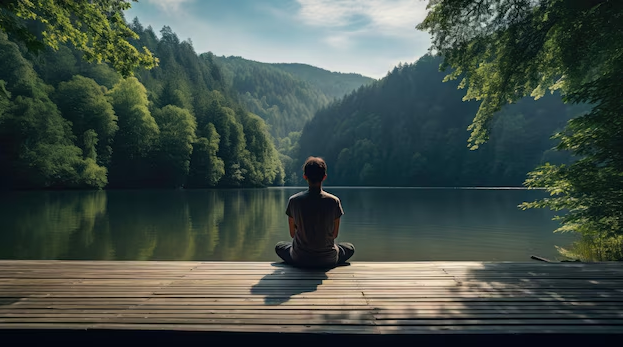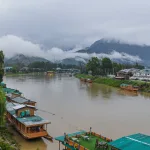In an increasingly interconnected world, the concept of inner peace often seems like a distant dream, overshadowed by the relentless barrage of global chaos. Conflicts, political unrest, economic instability, and environmental crises flood our news feeds daily, leaving many individuals feeling overwhelmed and anxious. In this tumultuous landscape, the quest for inner peace becomes not just a personal journey, but a necessary endeavor for maintaining mental and emotional well-being.
The noise of external chaos can drown out the stillness we seek within. Yet, it is in the heart of this cacophony that we can find pathways to serenity. Inner peace is a state of mental and emotional calmness, a sanctuary where one can retreat from the chaos of the outside world. While the circumstances around us may be chaotic, the pursuit of inner peace emphasizes the idea that we possess the power to control our reactions, perceptions, and thoughts.
Inner peace is not merely the absence of turmoil; it is a proactive state of being characterized by acceptance, clarity, and harmony. It involves understanding ourselves deeply, recognizing our emotions, and learning to navigate life’s challenges without being swept away by them. This state of tranquility allows us to respond to adversity with resilience and grace, fostering a sense of stability that transcends external chaos.
Achieving inner peace often begins with self-awareness. In a world where distractions abound, the ability to turn inward and reflect is crucial. Self-awareness allows us to identify the sources of our stress and anxiety, enabling us to address them thoughtfully. Practices such as mindfulness, meditation, and journaling can help cultivate this awareness, providing the tools necessary to navigate the complexities of modern life.
Mindfulness, in particular, has gained recognition as a powerful method for finding inner peace. It encourages us to remain present in the moment, focusing on our thoughts, feelings, and sensations without judgment. By anchoring ourselves in the present, we can break free from the cycle of worry and rumination that often accompanies chaos. Mindfulness teaches us that while we cannot control external events, we can choose how to respond to them.
Incorporating mindfulness into our daily routines can be as simple as pausing to take deep breaths or observing our surroundings. It can also manifest in more structured practices, such as meditation or yoga, which allow us to connect with our bodies and minds. As we become more attuned to our internal landscape, we cultivate resilience and adaptability, essential qualities for maintaining inner peace amidst turmoil.
Another vital aspect of pursuing inner peace in a chaotic world is embracing simplicity. Modern life often glorifies busyness and complexity, which can lead to feelings of overwhelm. By simplifying our lives—whether through decluttering our physical spaces, setting boundaries, or prioritizing essential activities—we create room for tranquility.
Simplicity encourages us to focus on what truly matters, allowing us to engage with our passions and relationships more meaningfully. When we eliminate unnecessary distractions, we can invest our time and energy into pursuits that nurture our well-being, fostering a deeper sense of fulfillment and contentment.
While the journey to inner peace is deeply personal, it is also interconnected with our relationships and communities. In times of chaos, fostering connections with others can provide solace and support. Sharing our experiences, thoughts, and feelings with trusted friends or family members can alleviate feelings of isolation. Engaging in open and honest conversations fosters empathy, reminding us that we are not alone in our struggles.
Moreover, participating in community activities or supporting social causes can cultivate a sense of belonging and purpose. When we contribute to something greater than ourselves, we shift our focus from internal turmoil to collective healing, reinforcing our inner peace. This connection with others serves as a reminder of our shared humanity and the strength we can draw from one another in challenging times.
Another key component in the pursuit of inner peace is identifying and aligning with our purpose. Purpose acts as a guiding light, providing direction and motivation amidst the chaos of daily life. When we engage in activities that resonate with our values and passions, we experience a sense of fulfillment that enhances our overall well-being.
Reflecting on what brings us joy and fulfillment allows us to align our actions with our core beliefs. Whether it is pursuing a career, engaging in creative expression, or volunteering for a cause we care about, aligning with our purpose fosters a deep sense of contentment. This connection can create a powerful counterbalance to external chaos, anchoring us in a sense of stability and meaning.
Finally, the pursuit of inner peace requires cultivating acceptance and adaptability. The chaotic nature of the world means that uncertainty is inevitable. By embracing change and recognizing that challenges are a natural part of life, we can respond with resilience rather than resistance.
Acceptance does not imply passivity; rather, it invites us to acknowledge our feelings and circumstances without judgment. By letting go of the need to control everything, we free ourselves from unnecessary stress and anxiety. Adaptability empowers us to navigate change gracefully, reinforcing our inner peace even as the world around us shifts.
In the face of global chaos, the pursuit of inner peace emerges as a vital journey for individuals seeking balance and fulfillment. By embracing mindfulness, simplicity, connection, purpose, and adaptability, we can cultivate a sanctuary of tranquility within ourselves.
While external circumstances may remain turbulent, the strength and clarity we develop through this pursuit empower us to engage with the world more authentically and compassionately. Ultimately, the journey toward inner peace is not a destination but a lifelong practice—one that allows us to thrive amid chaos and emerge stronger, more resilient, and more connected to ourselves and others.
(Author is a columnist and can be reached at: [email protected])








